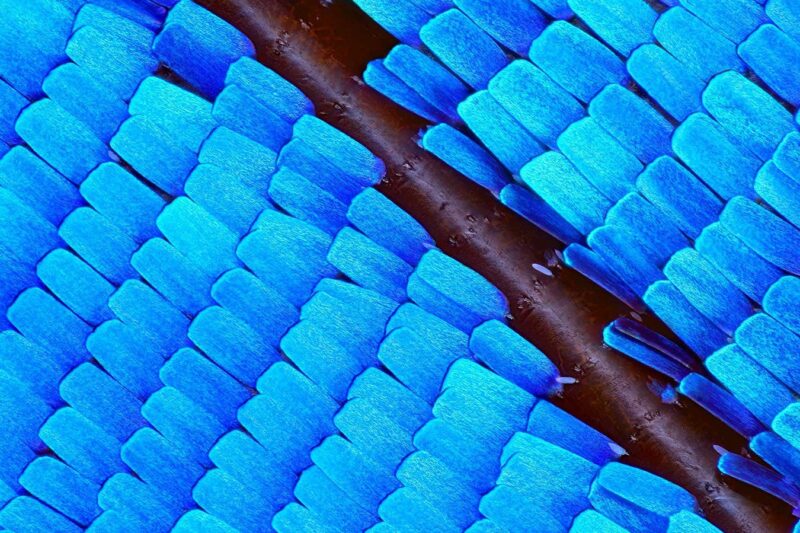A team of researchers from Shenzhen University in China has developed a new thin film that takes inspiration from the wings of Morpho butterflies. These butterflies possess unique nanostructures on their wings that reflect and bend light, creating a vivid blue color from multiple angles. By mimicking this phenomenon, the researchers have created a thin film that acts as an energy-saving reflective material, potentially providing more vibrant colors than traditional paints currently available in the market.
The film consists of three layers: a top layer made of a compound of titanium, silicon, and oxygen, a middle layer of special frosted glass, and a bottom layer of thin silver mirror. The frosted glass layer contains tiny structures that give it a frosty appearance, similar to the texture found on butterfly wings.
One of the primary goals of the film is to dissipate heat by diffusing light. Generally, when a material absorbs light, its temperature rises. However, the researchers designed the film’s layers to diffuse light instead, leading to a cooling effect. By adjusting the layers, they were also able to control the reflection and alter the color of the film.
To test the functionality of the film, the team created samples in various colors, including red, green, and blue. These samples were then exposed to sunlight for about seven hours while the researchers monitored their temperature. In comparison to the surrounding air, all the samples remained approximately 2°C cooler. However, the film’s true cooling power was demonstrated when it was applied to a car.
The researchers observed that a patch of film tinted with a conventional blue paint subjected to sunlight reached a scorching temperature of 75°C, whereas their sample piece managed to maintain a temperature of around 42°C when placed on the car. Additionally, the film maintained its color even when viewed from different angles, a rare characteristic for artificial nanostructures that manipulate light.
Looking ahead, the team envisions the film being used to cover electric vehicles. By reducing the energy consumption of air conditioning systems in these vehicles, the colored, thin film could potentially increase their mileage and promote energy efficiency.
This innovation opens up new possibilities for sustainable cooling solutions in the automotive industry. With further development, the butterfly-inspired reflective film may soon revolutionize the way cars stay cool under the sun.








